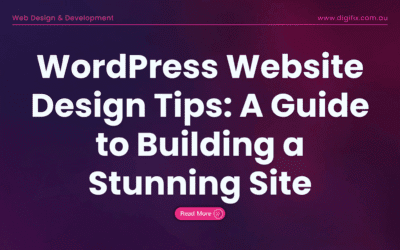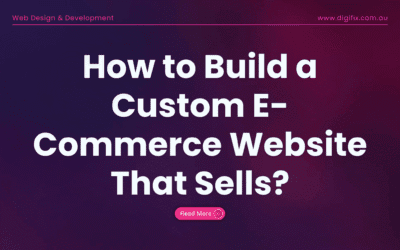A staggering 75% of users judge a website’s credibility by its design. This shows how important a well-designed website is. It must look good and rank well on search engines. At DigiFix, we know that creating a powerful digital experience is key for businesses to stand out online.
A well-made website can really boost your search engine rankings. This brings more visitors and sales. To get this, you need to balance SEO and web design, as our guide on achieving a balance between SEO and web shows. This way, you can grow your brand, engage users, and see real growth. Let’s discover the impact of web design on SEO (Search Engine Optimization).
Key Takeaways
- A well-designed website is crucial for credibility and SEO rankings.
- Balancing SEO and web design is key to online success.
- User-focused content naturally attracts backlinks.
- Optimizing web design elements improves page load speed.
- Intuitive navigation enhances user experience and SEO.
Understanding the Web Design-SEO Relationship
Your website’s design is key to its search engine ranking. It’s vital to grasp the link between web design and SEO. A site that looks good and works well can boost your online presence and SEO efforts.

How Search Engines Interpret Website Design
Search engines like Google look at website design in different ways. They consider mobile responsiveness, page loading speed, and navigation structure. These factors affect how users experience your site and how search engines see it.
A mobile-responsive design is crucial for SEO, as more people use mobile devices. For more on SEO basics, check out our blog.
The Evolution of SEO and Web Design Standards in Australia
In Australia, SEO and web design have evolved. Now, there’s a focus on user experience and technical SEO requirements. Web design must keep up with search engine updates to ensure sites are both attractive and SEO-friendly.
Our team creates custom websites that are both visually stunning and strategically smart. We blend innovative design with advanced functionality to enhance your online presence.
Key Web Design Elements That Directly Impact SEO
Web design plays a huge role in SEO. Many elements are key to improving search rankings and user experience. It’s important to understand how design affects both.
Mobile Responsiveness and Its SEO Implications
A mobile-responsive design is now essential. Most people use mobiles to access websites. Search engines favour sites that work well on all devices.
It’s crucial to make sure your site looks good on all screens. This helps keep your SEO in good shape.
Page Loading Speed and Performance Metrics
Page loading speed is very important for SEO. Slow sites annoy users and get lower rankings. To speed up your site, try these tips:
- Optimize images
- Use browser caching
- Reduce CSS and JavaScript files

Navigation Structure and User Experience
A good navigation system makes your site easy to use. It also helps search engines understand your site’s layout. A clear layout means users find what they need quickly.
This reduces bounce rates and boosts engagement. Focus on these key areas:
- Simple menus
- Clear content categorization
- Clear call-to-actions
- Mobile-friendly navigation
By improving these web design and search engine optimization impact areas, your site will be more visible and user-friendly. This leads to better business results.
Technical Web Design Aspects Affecting Search Rankings
The technical side of your website can really affect how it ranks in search engines. A well-built site can make it more visible, attract more visitors, and grow its online presence. Our team, with over a decade of experience, crafts websites that work well on all devices, are easy to find online, and can grow with your business.
Clean Code and Proper HTML Structure
Clean code and a good HTML structure are key for search engines to get your site. This means using simple HTML, cutting down on unnecessary code, and making your site easy to follow. Clean code helps search engines crawl your site better and makes it better for users too.
Using the right HTML structure means organizing your content with header tags. This helps search engines understand your site’s layout. This can make your site show up higher in search results.
URL Structure and Site Architecture
A good URL structure and site layout are vital for search engines to find and index your site. This means making URLs clear and to the point, showing what your page is about. Site architecture is how your site is set up, including how pages link to each other.
A well-organized site makes it easier for search engines to see what your site is about. This helps users find what they need faster. You can do this by having a clear page hierarchy, using breadcrumbs, and making important pages easy to reach.
Image Optimization and Alt Text Implementation
Optimizing images and using good alt text are key for making your site better for everyone and search engines. This means making images smaller, using clear file names, and adding alt text that describes the image well.
Alt text is not just for accessibility; it’s also a chance to include keywords. This can help your site show up more in image searches. By optimizing your images, you can boost your site’s SEO and make it better for users.
By focusing on these technical aspects, you can improve your site’s search rankings, get more visitors, and reach your online goals.
User Experience Design as an SEO Factor
Understanding the role of user experience (UX) design in SEO is key. A good UX design makes your website easy to use and valuable to visitors. It’s not just about looks; it’s about being user-friendly and useful.
UX design affects how users behave on your site. A positive experience keeps users engaged longer. This can lower bounce rates and increase dwell times, showing search engines your site is relevant.
Bounce Rate and Dwell Time Considerations
Bounce rate and dwell time are important for search engines. A high bounce rate means your site might not meet user needs. But, a longer dwell time shows users find your content valuable. By improving UX, you can boost your SEO.
Intuitive Navigation and Its SEO Benefits
Clear navigation is key for UX and SEO. Easy-to-use navigation helps users find what they need. This improves their experience and can lead to better engagement and conversion rates.
It also helps search engines understand your site better. As DigiFix points out, SEO-friendly navigation is crucial for success.
Content Presentation and Readability
How you present your content matters a lot. Clear headings and concise paragraphs make your content easy to read. This improves user engagement and your SEO.
By focusing on UX design, you can make a website that attracts users and ranks well. DigiFix, a top web design company in Australia, offers solutions that grow your brand and engage users.
The Impact of Web Design on SEO Performance Metrics
Your website’s design can make or break its SEO. A good design attracts visitors and boosts search rankings. Our team combines creative design with smart functionality for a strong online presence.
Web design affects SEO in many ways. Knowing these areas is key to better search rankings.
Core Web Vitals and Page Experience Signals
Core Web Vitals are now a big part of Google’s ranking. They focus on how fast your site loads, how it interacts, and how stable it looks. Meeting these standards is crucial for better SEO.
- Optimize images and use lazy loading to enhance loading times.
- Minimize the use of heavy JavaScript and CSS files.
- Ensure smooth interactions by optimizing for interactivity.
Mobile-First Indexing Considerations
Most people use mobiles to visit websites. So, mobile-first indexing is the standard. Your site must work well on all devices.
To make your site mobile-friendly, try these:
- Use a responsive design that fits all screen sizes.
- Test your site on various devices for compatibility.
- Make content easy to find and navigation simple for mobile users.
Site Security and HTTPS Implementation
Site security is vital for SEO, with HTTPS implementation being a key factor. Google favors secure sites. So, getting an SSL certificate and using HTTPS is crucial.
By focusing on these web design aspects, you can boost your SEO. This will attract more visitors and enhance your online presence.
Custom Web Design Solutions for SEO Success in Australia
Custom web design is key to unlocking SEO potential in Australia. A website tailored to your industry and audience boosts your online presence. It also drives more targeted traffic to your site.
Tailoring Design Elements to Your Industry and Audience
A custom web design lets you add elements that connect with your audience. This improves user engagement and boosts conversion rates. It ensures your website meets your industry’s specific needs, making you stand out.
For example, a fashion brand in Australia might use bold visuals and a modern design to attract younger people. On the other hand, a financial services firm might choose a more conservative and professional look.
Balancing Aesthetic Appeal with Technical SEO Requirements
A good website balances looks with technical SEO needs. It includes mobile responsiveness, fast loading speeds, and intuitive navigation to enhance user experience and search rankings.
Using the latest web design trends and technologies, you can make a website that looks great and is SEO-friendly. This enhances your SEO efforts.
The Value of Professional Web Development for Long-term SEO
Investing in professional web development is vital for long-term SEO success. A well-built website is a solid base for your online presence. It lets you keep up with market changes and SEO best practices.
Working with a top web development agency like DigiFix can help. You’ll get a custom website that drives real results and grows your brand’s online presence.
Conclusion: Investing in SEO-Driven Web Design for Business Growth
The link between web design and SEO is complex. A well-designed site is key for a strong online presence and lasting SEO success. It helps you create a digital space that draws in, keeps, and converts your target audience.
Good web design for SEO means mixing looks with technical needs. Companies like DigiFix don’t just make websites; they build powerful digital experiences. Their skills help boost your brand, increase user interaction, and drive growth.
Choosing SEO-driven web design is a smart move for business growth. It’s about having a site that looks good and ranks well on search engines. With a strong online presence, you can outdo competitors and reach your business targets.





0 Comments